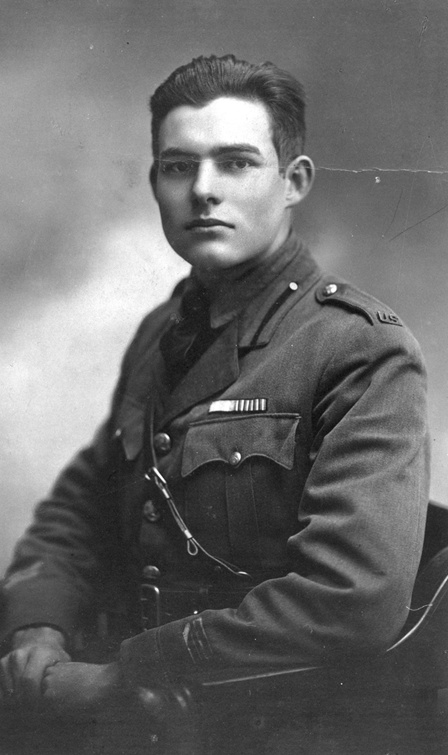Hemingway, Moravia e il fascismo. La “fortuna” dello scrittore americano in Italia tra gli anni ’20 e gli anni ’60
DOI:
https://doi.org/10.13133/2532-1994_3.2_2019Abstract
Among the Italian responses to Hemingway’s death, Alberto Moravia’s stands out for his condemnation of the US writer’s cult of his publica persona. Comparing Hemingway to D’Annunzio, Moravia comes very close to calling Hemingway himself if not a Fascist, certainly someone whose values were close to Fascist ones. Moravia’s essay sparked a lively debate, with many Italian critics and writers coming out in defense of Hemingway, even when they may have been critical of specific aspects of his work. The essay sketches that debate, and then goes on to analyze what were, historically, Hemingway’s own pronouncements on Fascism, Mussolini, and D’Annunzio. The historical record shows that the American writer was unambiguously hostile to Fascism, and as proven both by the banning of Farewell to Armsand by his exclusion from a literary jury that should have chosen the best American books for the Italian public, Hemingway was anathema to Mussolini and his associates. It is interesting and at the same time puzzling that, during the debate that followed Moravia’s article, hardly anyone referred to the historical archive in any depth. While this debate may be typical of Cold War intellectual frays and by now dated, it is worth remembering that criticism of Hemingway has been often marked by political overtones both in the past and in the present. Moreover, the importance of Hemingway’s work for Italian writers and the intensity of the debate surrounding the merits of his artistic accomplishments would suggest that he may well deserve to be included in the canon of twentieth-century Italian literature.References
Antonelli Claudio, Pavese, Vittorini e gli americanisti. Il mito dell’America, Firenze: Edarc Edizioni, 2008.
Benn Micahels Walter, Our America: Nativism, Modernism, and Pluralism, Durham: Duke University Press, 1995.
Beynet Michel, L’Image de l’Amérique dans la culture italienne de l’entre deux-guerres, 3 vols, Aix-en-Provence: Université de Provence, 1990.
Bo Carlo, “Al di là dell’avventura”, La Stampa, 4 luglio 1961, 3
Bonsaver Guido, Censorship and Literature in Fascist Italy , toronto: University of Toronto Press, 2007.
Calvino Italo, Introduzione a Pavese Cesare, La letteratura americana e altri saggi, a cura di Italo Calvino, Torino: Einaudi, 1951.
Carducci Dominique, Gli intellettuali e l’ideologia americana nell’Italia letteraria degli anni Trenta, Manduria: Lacaita, 1973.
Cirino Mark, “The Nasty Mess: Hemingway, Italian Fascism, and the New Review Controversy of 1932”, The Hemingway Review, 33.2, Spring, 2014, 31.
Corona Mario, Un rinascimento impossibile. Letteratura, politica e sessualità nell'opera di Francis Otto Matthiessen, Verona: ombre corte, 2007.
Diggins John P., “The American Writer, Fascism and the Liberation of Italy”, American Quarterly 18.4, Winter 1966.
Dini Andrea “Calvino, Hemingway e Per chi suona la campana?”, Studi Italiani XXVII.2 (2015), 81-120
-------, “‘Hemingway è stato uno dei miei primi modelli’: Calvino e i ‘moduli stilistici’ dell’esordio”, in Studi di letteratura italiana in onore di Gino Tellini, a cura di Simone Magherini, Firenze: Società Editrice Fiorentina, 2018, 861-83.
Dunnet Jane, The “mito americano”and Italian Literary Culture under Fascism, Roma: Aracne, 2015.
Fernandez Dominique, Il mito dell’America negli intellettuali italiani dal 1930 al 1950, Caltanissetta-Roma: Sciascia, 1969.
Fortunati Vita, “Hemingway, the Embodiment of the American Myth, and Italian Leftist Writers”, in Hemingway's Italy: New Perspectives, a cura di Sanderson Rena, Baton Rouge: Louisiana State University Press, 2006: 225-31.
Foucault Michel, L’ordine del discorso, Torino: Einaudi, 1972.
Hemingway Ernest, “Fascisti Party Half-Million”, in Dateline: Toronto. The Complete Toronto Daily Dispatches, a cura di William White, New York: Scribner, 1985.
-------, ‘Potshot Patriots’ Unpopular in Italy”, in Dateline.
-------, “Mussolini, Europe’s Prize Bluffer”, in Dateline.
-------, The Complete Poems, Lincoln: Nebraska University Press, 1992.
-------, 88 Poems, a cura di Nicholas Gerogiannis, New York: Harcourt Brace Jovanovich, 1979; trad. it. di Vincenzo Mantovani, 88 poesie, Milano: Mondadori, 1993
Kinnamon Keneth, “Hemingway and Politics”, in The Cambridge Companion, a cura di S. Donaldson.
Linati Carlo, Introduzione a ‘Il ritorno del soldato.’” Convegno 6.6-7 (30 giugno-30 luglio 1925).
Lombardo Agostino, La ricerca del vero , Roma: Edizioni di Storia e Letteratura, 1961.
-------, “Ricordo di Hemingway”, Il Mondo, 14 agosto 1962 e ora in Il diavolo nel manoscritto (Milano: Rizzoli, 1974, 238-54
-------, “Hemingway in Italy”, Hemingway Review 12, Summer, 1992: 14-19.
Monelli Paolo, “Un colonnello in gamba” su La Stampa del 17 ottobre 1950: 3.
Montale Eugenio, “Schietta umanità”, Il Corriere della Sera, 4 luglio 1961: 3
Moravia Alberto, “Amici dei morti e nemici dei vivi”, L’Espresso, 20 Agosto 1961, 8.
-------, “Hemingway niente e così sia”, L’Espresso, 9 luglio 1961, ora in Hemingway, a cura di Brown John e Livi Livia, Milano: Feltrinelli, 1964: 226-29
Pandolfi Anna. “La fortuna di Hemingway in Italia (1929-1961)”, Studi Americani 8, 1962: 151-99.
Piovene Guido, “Moravia ha torto”, L’Espresso, 16 luglio 1961 e ora in Hemingway, a cura di Brown e Livi.
Pivano Fernanda, La ragazza che ama l’America, Roma: Rai Eri, 2000.
Praz Mario, “Un giovane narratore americano”, La Stampa, 14 giugno 1929.
Sanderson Rena, “Hemingway and Gender History”, in A Companion, a cura di S. Donaldson, 170-96.
Segal, Clancy Hemingway Lives! Why Reading Hemingway Matters Today, New York—London: OR Books, 2013.
Downloads
Published
How to Cite
Issue
Section
License

Except where otherwise noted, the content of this site is licensed under a Creative Commons Attribution 3.0 Unported License.


